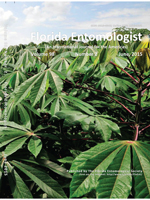Temperature in habitats of organisms generally is not constant but changes spatially and temporally. When eggs of ectotherms are exposed to large temperature fluctuations, egg phenotypes and post-hatching traits may be altered, but little relevant information is available on insects. Hence, we simulated a set of natural diurnal temperature fluctuations each with the same mean temperature (25 ± 0, 25 ± 2, 25 ± 4, 25 ± 6, 25 ± 8, 25 ± 10 °C), to which we exposed the eggs of the diamondback moth, Plutella xylostella (L.) (Lepidoptera: Plutellidae), and assessed subsequent egg development, survival and post-hatching traits. Our results showed that there were no significant differences in these phenomena between the constant temperature treatment and the treatments with moderate temperature fluctuations. However, large temperature fluctuations slowed development and lowered hatching rate during the egg stage. In addition the effects of these large temperature fluctuations extended to the larval stage, but not to the pupal and adult stages. No apparent costs of compensatory responses, which occurred in the larval stage, were detected in the later stages. These findings indicate that fluctuating temperature effects are potentially important in predicting insect phenology and population dynamics. As an independent factor, the effects of temperature fluctuations on a stage in the life history must be factored into models for predicting insect development that are based on mean temperatures. The larger of the temperature fluctuations to which eggs of diamondback moth were exposed, affected development time, hatching rate, larval growth and pre-pupal mass.
How to translate text using browser tools
1 June 2015
Effects of Large Temperature Fluctuations on Hatching and Subsequent Development of the Diamondback Moth (Lepidoptera: Plutellidae)
Kun Xing,
Chun-Sen Ma,
Fei Zhao,
Jv-Cai Han

Florida Entomologist
Vol. 98 • No. 2
June 2015
Vol. 98 • No. 2
June 2015
compensatory growth
crecimiento compensatorio
diurnal temperature fluctuations
egg stage
estadio de huevo
fluctuaciones de la temperatura diurna
Plutella xylostella




